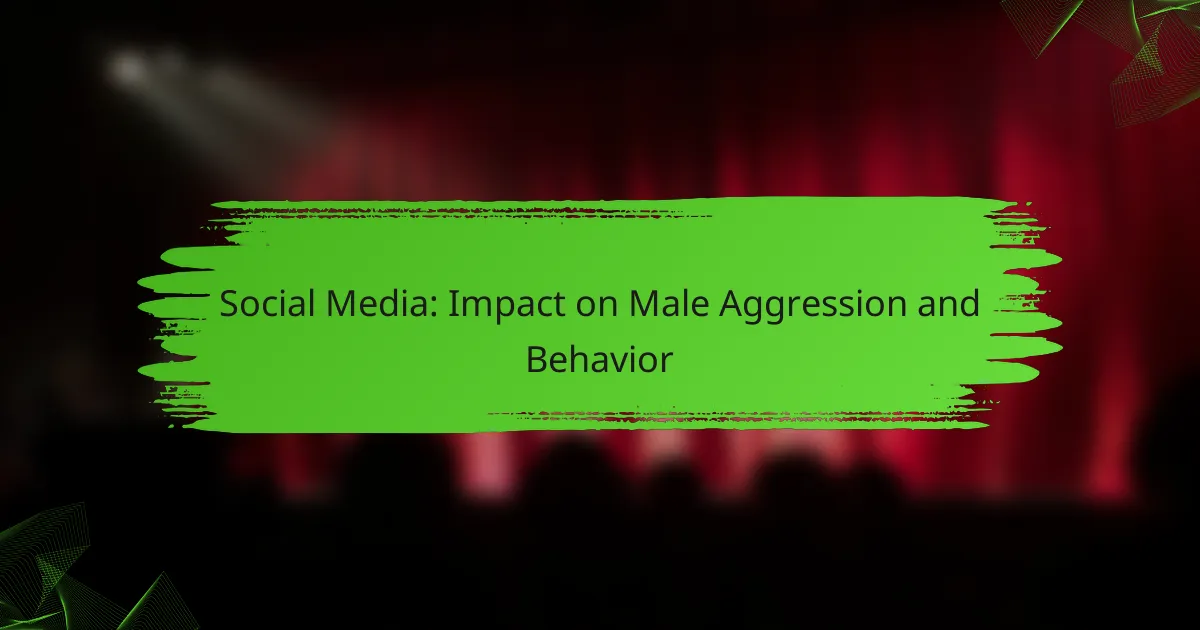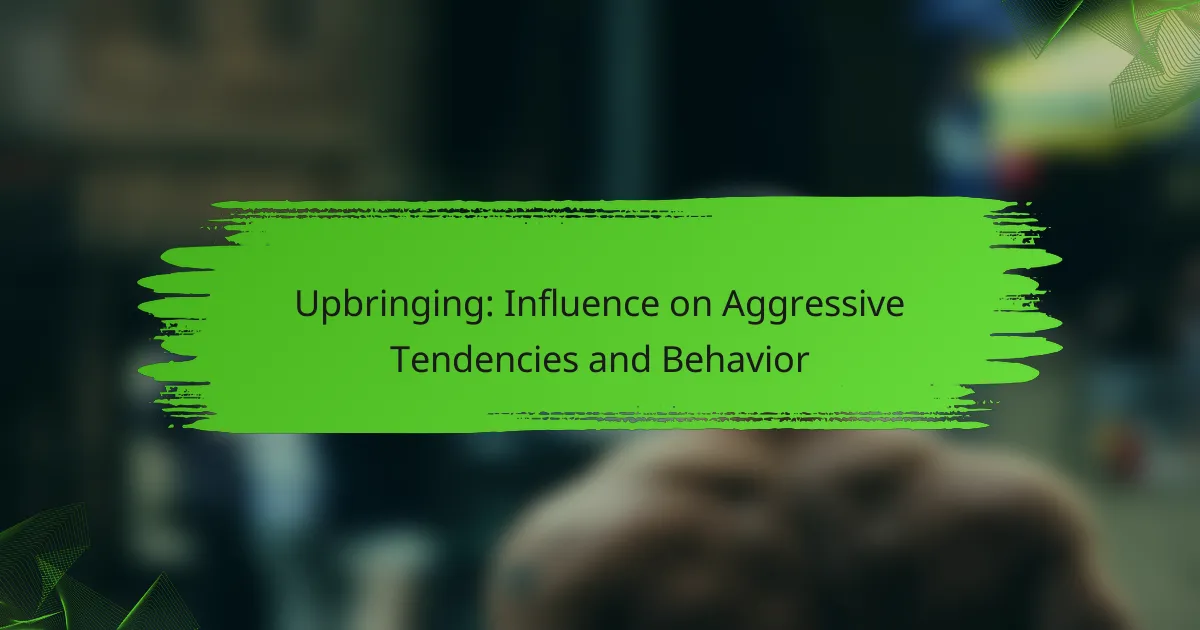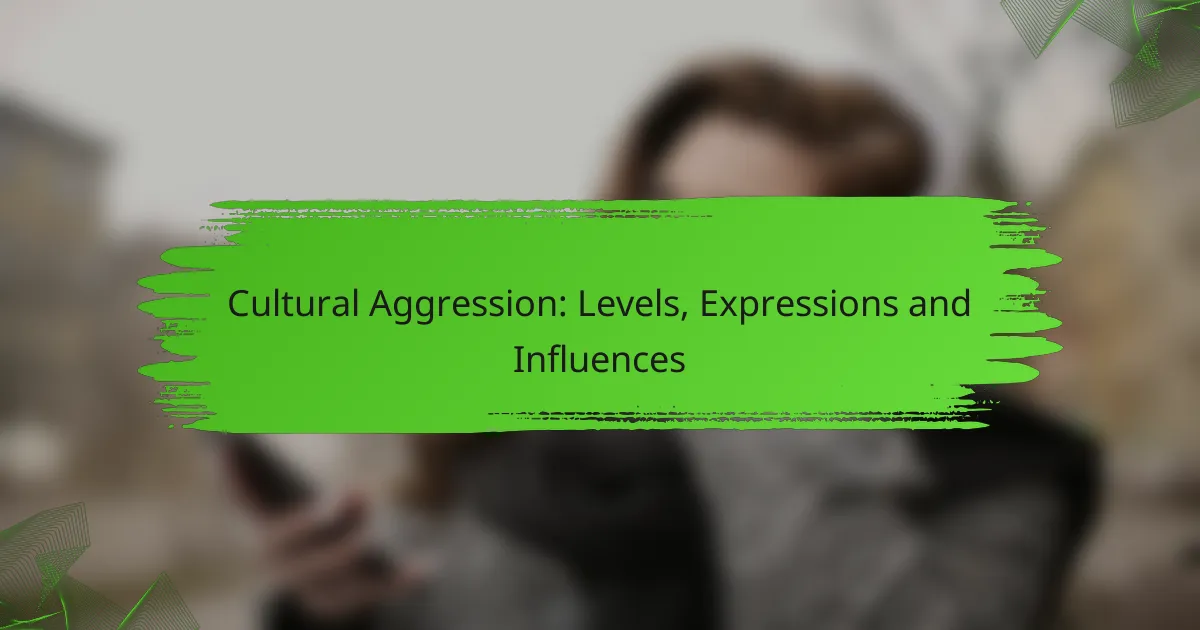Social media plays a crucial role in shaping male aggression and behavior by exposing users to aggressive content and interactions. This exposure can lead to desensitization to violence and a normalization of aggressive responses, while also impacting psychological well-being through constant comparisons and the reinforcement of traditional masculine traits. As a result, social media not only influences how men perceive themselves but also how they express their emotions and interact with others.
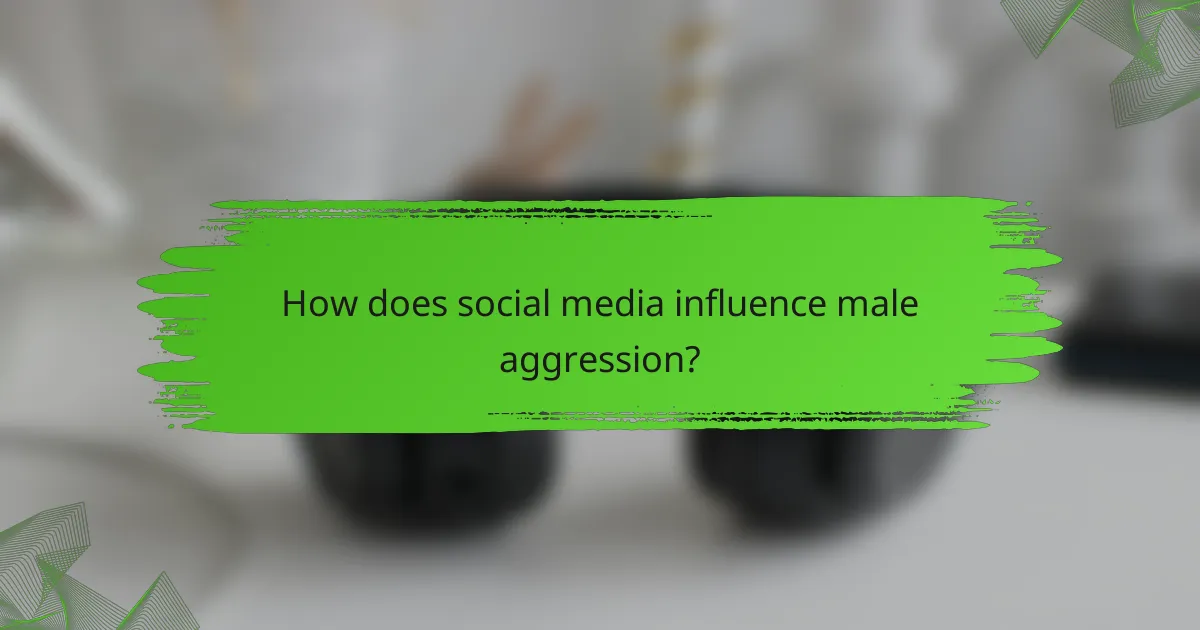
How does social media influence male aggression?
Social media can significantly influence male aggression by exposing users to aggressive behaviors and violent content. This exposure may lead to increased desensitization to violence and a normalization of aggressive responses in various situations.
Increased exposure to violent content
Social media platforms often feature violent videos, memes, and discussions that can desensitize viewers to aggression. Regular exposure to such content may lead to a higher likelihood of aggressive thoughts and behaviors among males, particularly younger audiences.
For example, studies suggest that frequent viewers of violent media may exhibit increased hostility and a greater acceptance of violence as a means to resolve conflict. This can manifest in real-life situations, where individuals may react more aggressively than they would otherwise.
Social comparison and self-esteem issues
Social media encourages constant comparison with others, which can negatively impact self-esteem, particularly among males. When individuals perceive themselves as less successful or attractive compared to their peers, it can lead to feelings of inadequacy and frustration.
This sense of inadequacy may trigger aggressive behaviors as a way to assert dominance or compensate for perceived shortcomings. Engaging in aggressive online interactions or real-life confrontations can become a misguided attempt to reclaim a sense of power and control.
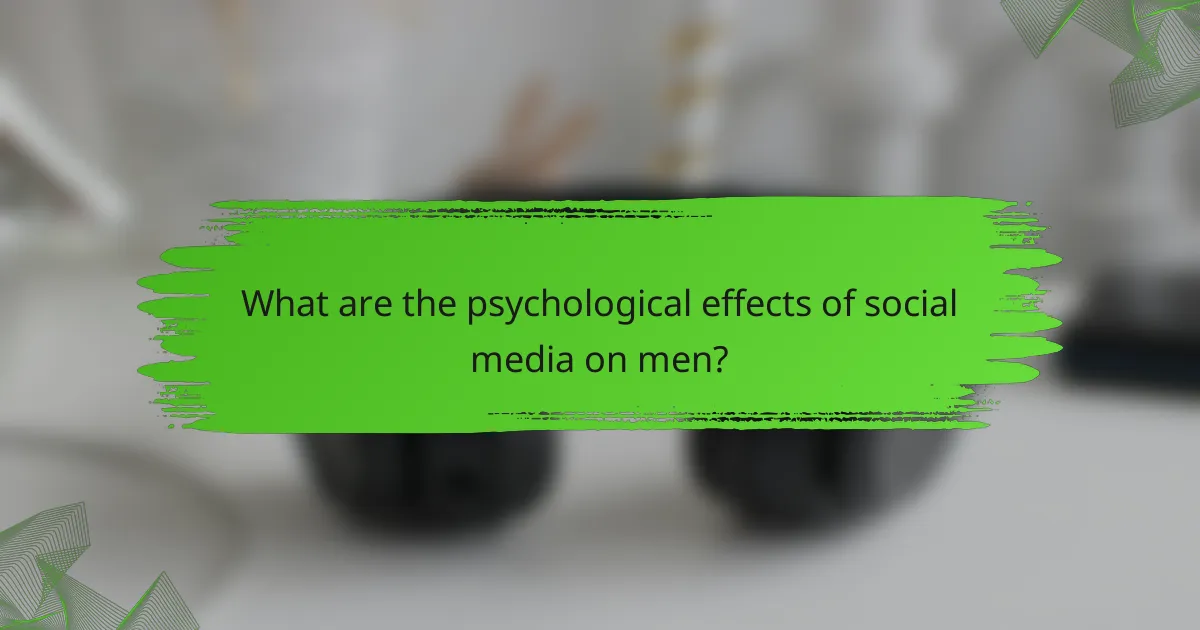
What are the psychological effects of social media on men?
Social media significantly impacts men’s psychological well-being, often leading to increased feelings of inadequacy and aggression. These effects can stem from constant comparisons with others and the nature of online interactions.
Heightened feelings of inadequacy
Men frequently experience heightened feelings of inadequacy due to the curated nature of social media. They may compare their lives, achievements, and appearances to those of others, leading to feelings of inferiority.
This sense of inadequacy can manifest in various ways, such as low self-esteem and anxiety. For instance, a man might feel pressured to achieve a certain lifestyle or physique that he sees portrayed online, which can be unrealistic.
To combat these feelings, men should focus on their personal goals and limit exposure to content that triggers negative comparisons. Engaging in offline activities and building real-life connections can also help mitigate these effects.
Increased aggression in online interactions
Social media can foster increased aggression in men’s online interactions, often due to anonymity and the lack of face-to-face communication. This environment can lead to hostile behaviors, such as trolling or cyberbullying.
Research suggests that men may be more likely to express aggression online than in person, as the digital space can diminish accountability. For example, a disagreement on a social platform may escalate quickly into personal attacks.
To reduce aggressive behaviors, men should practice empathy and think critically before responding to provocative content. Setting boundaries on social media use and taking breaks can also help maintain a healthier online presence.
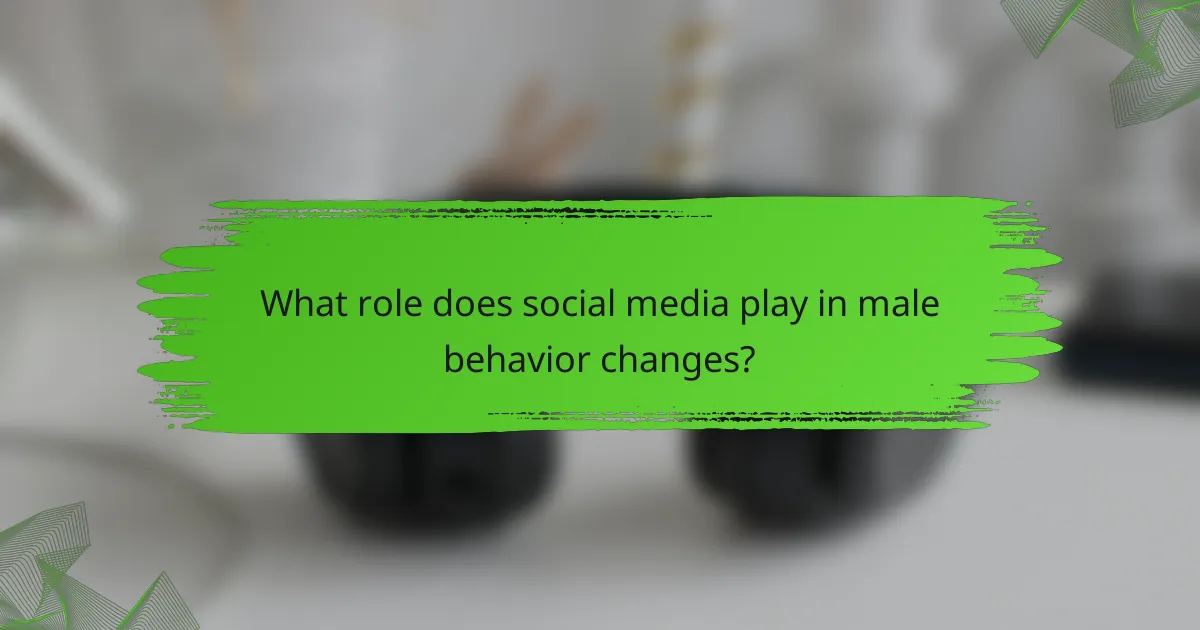
What role does social media play in male behavior changes?
Social media significantly influences male behavior by shaping perceptions of masculinity and aggression. Platforms often amplify certain traits associated with traditional masculinity, leading to changes in how men express themselves and interact with others.
Promotion of toxic masculinity
Social media can perpetuate toxic masculinity by glorifying traits such as dominance, emotional suppression, and aggression. Content that celebrates these characteristics often receives more engagement, reinforcing harmful stereotypes. For example, viral videos showcasing physical confrontations may encourage viewers to emulate such behavior.
Additionally, the prevalence of memes and posts that mock vulnerability or promote hyper-masculine ideals can create an environment where men feel pressured to conform. This can lead to a reluctance to seek help for mental health issues, further entrenching negative behaviors.
Normalization of aggressive behavior
Social media normalizes aggressive behavior by frequently showcasing it as acceptable or even desirable. This exposure can desensitize users, particularly young men, to violence and hostility. For instance, online gaming communities often celebrate aggressive tactics, which can translate into real-world interactions.
Moreover, the anonymity provided by social media can embolden individuals to express aggression without facing immediate consequences. This can result in a cycle where aggressive comments and actions are not only tolerated but encouraged, leading to a broader acceptance of such behavior in everyday life.
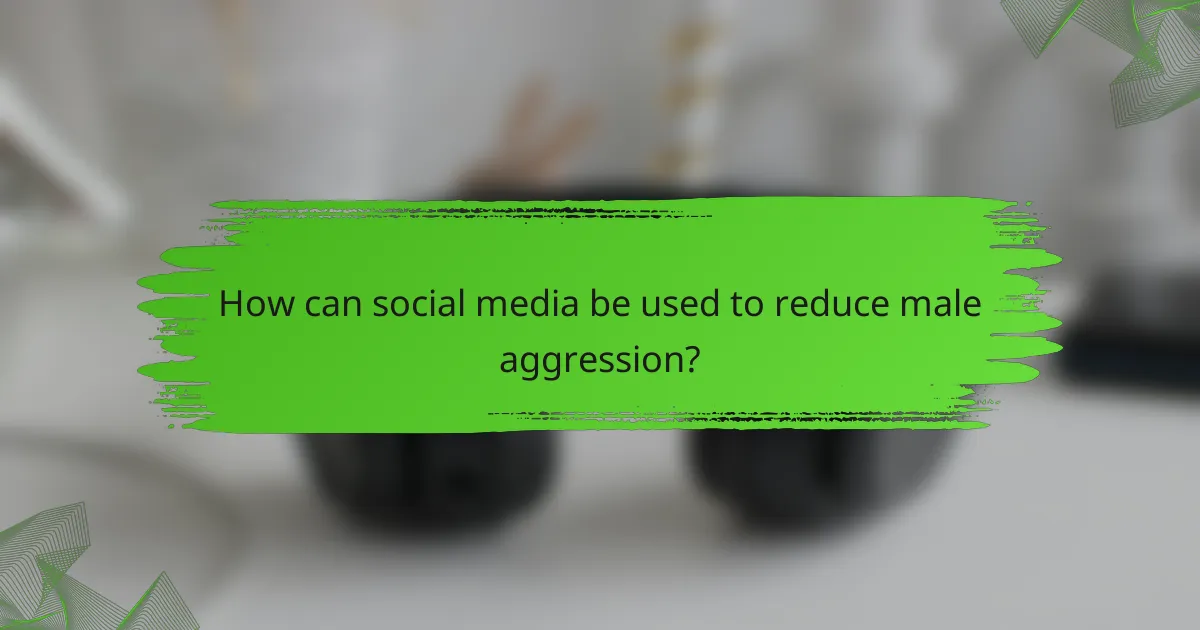
How can social media be used to reduce male aggression?
Social media can effectively reduce male aggression by promoting positive interactions and providing educational resources. By leveraging platforms to spread awareness and showcase role models, users can foster a more supportive environment that discourages aggressive behavior.
Awareness campaigns on platforms like Instagram
Awareness campaigns on platforms such as Instagram can play a crucial role in reducing male aggression. These campaigns often utilize eye-catching visuals and relatable messaging to engage users, raising consciousness about the impacts of aggressive behavior and promoting healthier alternatives.
For effective awareness campaigns, consider using hashtags that resonate with the target audience, such as #StopTheViolence or #HealthyMasculinity. Collaborating with influencers can also amplify the message, reaching a wider audience and encouraging participation.
Positive role models in social media
Highlighting positive role models on social media can significantly influence male behavior. When young men see figures they admire advocating for non-violent communication and emotional intelligence, it can inspire them to adopt similar attitudes and behaviors.
To maximize impact, role models should share personal stories and experiences that emphasize the importance of empathy and respect. Engaging content, such as videos or live Q&A sessions, can further enhance relatability and encourage followers to reflect on their own actions.
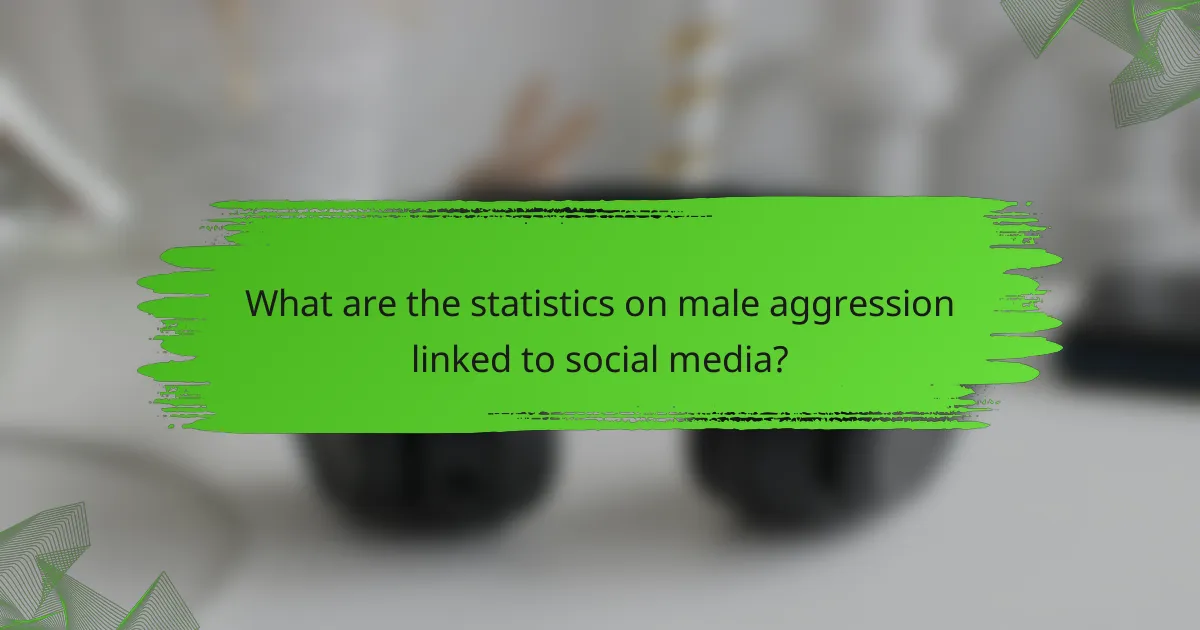
What are the statistics on male aggression linked to social media?
Research indicates a notable correlation between social media usage and increased levels of aggression among male users. Various studies suggest that exposure to aggressive content and online interactions can lead to heightened aggressive behaviors in real life.
Research studies on social media usage
Numerous research studies have explored the impact of social media on male aggression. For instance, some studies have found that males who frequently engage with violent video games or aggressive content on platforms like Facebook and Twitter report higher aggression levels. These findings highlight the potential influence of online environments on male behavior.
Additionally, longitudinal studies suggest that prolonged exposure to aggressive interactions on social media can desensitize users, leading to increased acceptance of violence as a normative behavior. This desensitization can manifest in both online and offline aggression.
Surveys on aggression levels among male users
Surveys conducted among male social media users reveal significant insights into aggression levels. Many respondents report feeling more aggressive after interacting with violent or confrontational posts. A substantial percentage of males indicate that they have engaged in aggressive behaviors online, such as insults or threats.
Furthermore, surveys often show a trend where younger males exhibit higher aggression levels compared to older demographics. This suggests that age and social media exposure may play critical roles in shaping aggressive behaviors among males.
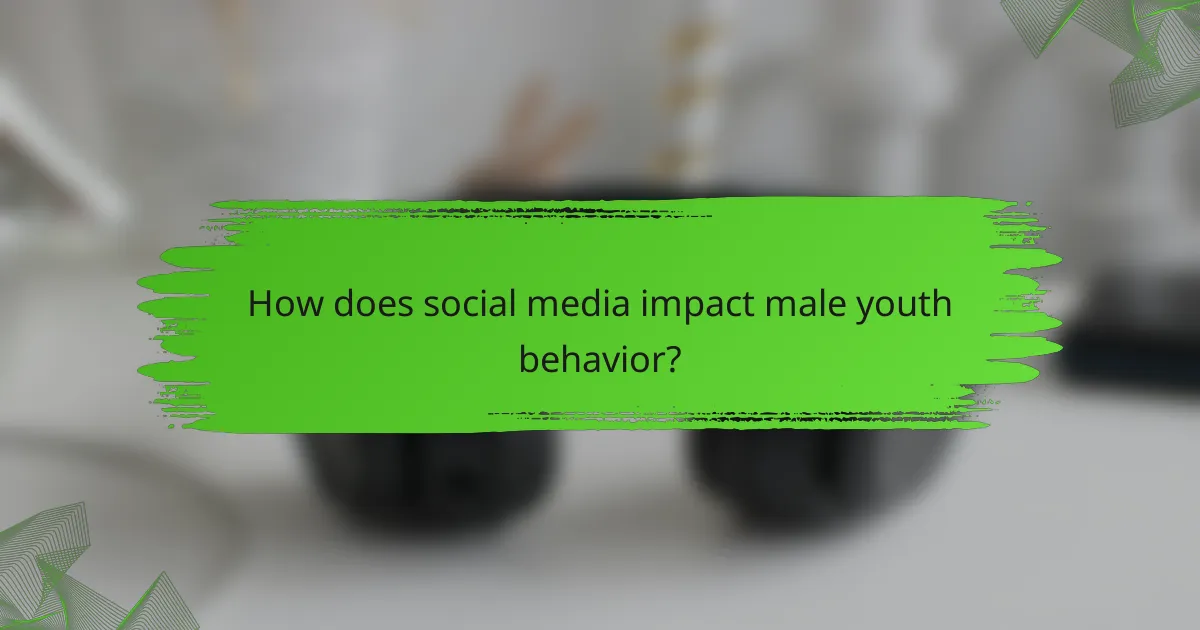
How does social media impact male youth behavior?
Social media significantly influences male youth behavior by shaping their interactions, self-perception, and responses to peer dynamics. The platforms often amplify aggressive behaviors and peer pressure, leading to both positive and negative outcomes in social interactions.
Influence of peer pressure on platforms
Peer pressure on social media can drive male youth to conform to aggressive behaviors to gain acceptance or status among their peers. This often manifests in the form of competitive posts, challenges, or even engaging in risky behaviors to showcase toughness.
For example, young males may feel compelled to participate in viral challenges that promote aggression or risk-taking, which can escalate into real-life confrontations. It’s crucial for parents and educators to discuss the implications of such pressures and encourage critical thinking about online interactions.
Effects of cyberbullying on aggression
Cyberbullying can significantly heighten aggression among male youth, as it creates an environment where negative behaviors are normalized. Victims of cyberbullying may retaliate with aggression, while bystanders might feel pressured to join in or remain silent, perpetuating a cycle of hostility.
Research indicates that young males exposed to cyberbullying are more likely to exhibit aggressive behaviors both online and offline. Addressing this issue requires open conversations about empathy, respect, and the importance of reporting harmful behaviors to trusted adults.
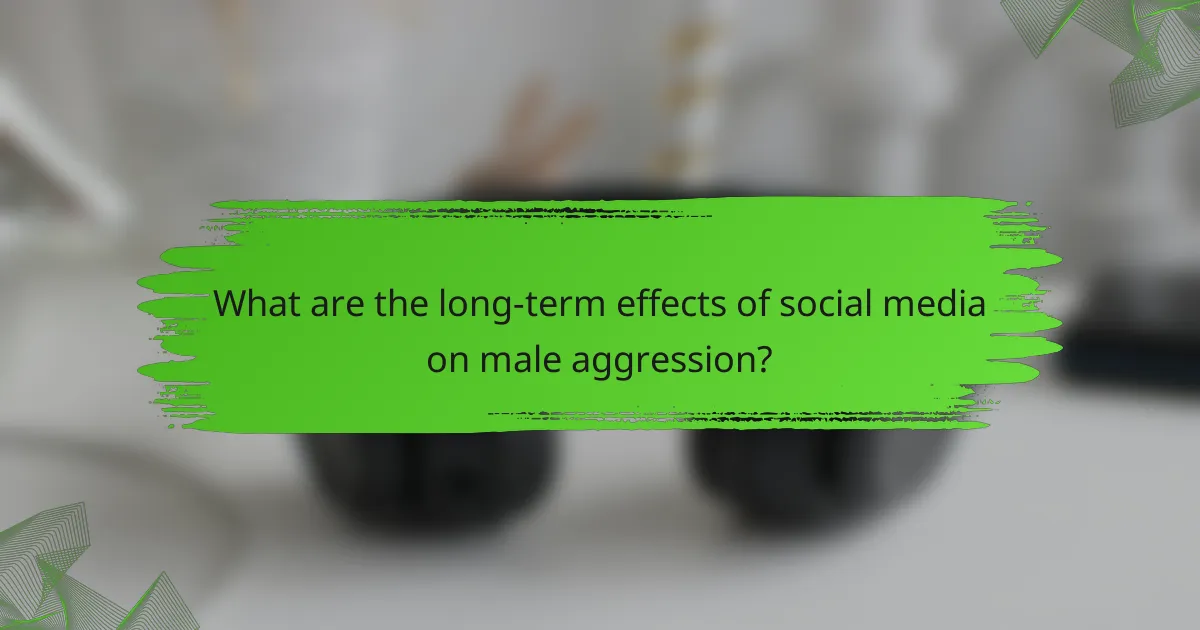
What are the long-term effects of social media on male aggression?
The long-term effects of social media on male aggression include increased exposure to violent content and a potential rise in aggressive behaviors. This exposure can lead to changes in attitudes and normalization of violence, influencing how males react in real-life situations.
Chronic desensitization to violence
Chronic desensitization to violence occurs when individuals become accustomed to violent imagery and behaviors through repeated exposure on social media platforms. Over time, this can diminish emotional responses to real-life violence, making aggressive acts seem less shocking or unacceptable.
For instance, males who frequently view violent video clips or graphic images may find themselves less empathetic towards victims of aggression. This desensitization can contribute to a cycle where violent behavior is increasingly tolerated or even imitated.
Increased likelihood of offline aggression
Increased likelihood of offline aggression can stem from the aggressive norms and behaviors that are often glorified on social media. Studies suggest that individuals, particularly males, who engage with violent content online may be more prone to exhibit aggressive behavior in their everyday lives.
For example, a male who regularly interacts with aggressive posts or comments may feel emboldened to express similar aggression in face-to-face interactions. This shift can manifest in various forms, from verbal confrontations to physical altercations, highlighting the potential real-world implications of online behavior.
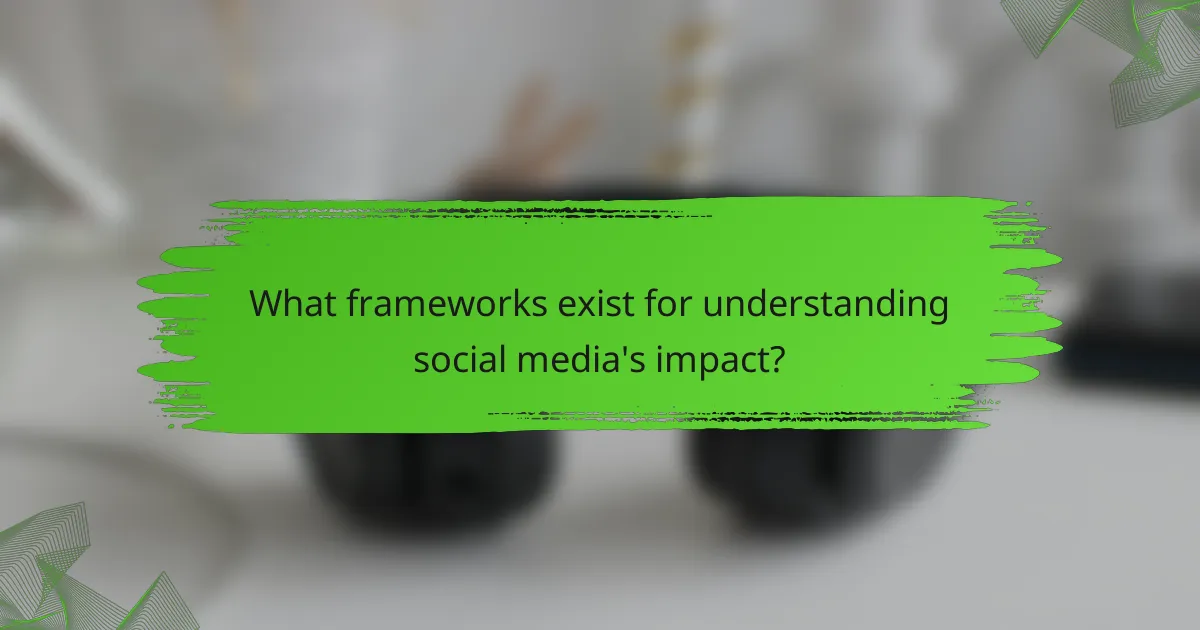
What frameworks exist for understanding social media’s impact?
Several frameworks help analyze social media’s influence on male aggression and behavior, focusing on how online interactions shape real-world actions. Understanding these frameworks can provide insights into the mechanisms behind aggressive behavior in digital environments.
Social learning theory
Social learning theory posits that individuals learn behaviors through observation and imitation of others, particularly role models. In the context of social media, males may emulate aggressive behaviors displayed by peers, influencers, or celebrities, reinforcing these actions as acceptable or desirable.
For example, if a popular figure shares aggressive content or engages in hostile interactions, their followers may adopt similar behaviors. This can create a cycle where aggression is normalized within certain online communities, leading to increased instances of such behavior offline.
Frustration-aggression hypothesis
The frustration-aggression hypothesis suggests that frustration can lead to aggressive behavior, particularly when individuals feel blocked from achieving their goals. On social media, users often experience frustration due to negative interactions, such as trolling or cyberbullying, which can trigger aggressive responses.
For instance, a male user who receives negative comments on a post may retaliate with aggressive replies or actions. This cycle of frustration and aggression can escalate, impacting not only the individual but also their online community and real-world interactions.
